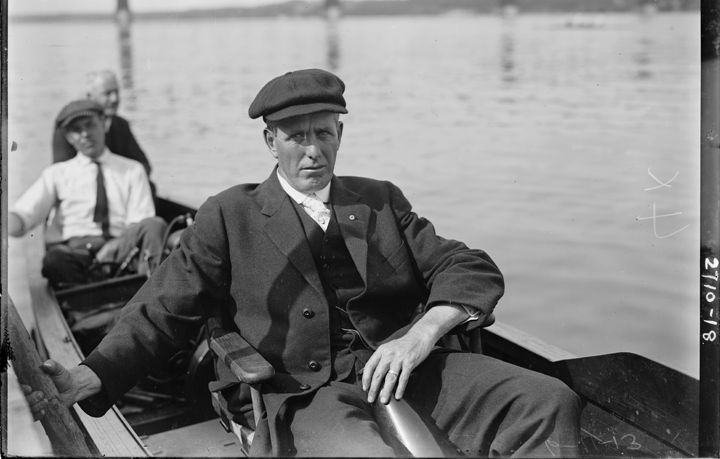UW Coach Hiram Conibear: Influencing the Stroke More than a Century Later
The man who came to be known as the father of rowing at the University of Washington – Hiram Conibear – was hired as head coach because no one else was available for the job.
Conibear held a degree from the Chatauqua School of Physical Training, and spent a couple of years each working in the athletic departments of the University of Chicago, University of Illinois, and University of Montana. In 1906 he served as the athletic trainer for the world championship Chicago White Sox.
When he arrived at Washington in 1907, as the trainer for the track and field and football teams, Hiram Conibear said “... to tell you the truth, I don't know one end of the boat from another.” And upon being offered the position of coach for the crew program, he replied "I never did nothing but row a boat around a lagoon in Chicago, but if you want me, I'll do what I can."
An anecdote passed down from the beginning of the 20th century claims that UW parents objected to Conibear cussing through his megaphone from the shore of Lake Washington at his oarsmen on the water. "I have to cuss a little in order to bluff my way along," Conibear admitted. Fake it 'til you make it, as they say.
After studying the traditional Oxford style of rowing, Conibear became convinced that this style – which had oarsmen searching for maximum power at the end of a long layback stroke – was uncomfortable.
Conibear immersed himself in understanding the physics of the stroke. He borrowed a skeleton from the UW biology department, set it in a rowing seat, wrapped its fingers around a broom handle, and moved the skeleton through stroke after stroke, taking notice of the anatomy at each stage. He came to realize that unless the blade hit the water at a speed equal to or greater than the water's speed, there would be a moment of unwanted drag. This experimentation led to a shorter layback stroke with snappier blade entry and exit that came to be known as the Conibear stroke (also called the Washington stroke and American stroke) which revolutionized college rowing.
In 1913, UW competed in the Intercollegiate Rowing Association regatta in Poughkeepsie, NY – becoming the first crew from the West coast of the United States to be invited to participate in the association's 18 year history. The mens eight looked poised to win, but were set back by a snapped foot strap, and finished the 4-mile race in third place, rocking the American rowing establishment on the East coast.
Conibear continued to coach at the University of Washington, until 1917, when he died at age 46 after falling from a plum tree in his yard.
Though Conibear didn't live to see the true impact of his research and experimentation on UW racing, in 1923 the crew became the first Western program to win in Poughkeepsie, setting the stage for UW – and the University of California – to became dominating factors. UW consistently placed in the top three, and more often than not, they won.
Nearly 100 years later – in 2015, UW's mens crew coach Michael Callahan said "we still continue to apply ... the genius of the Conibear Stroke every day." Conibear's influence is obvious, and "differences in the recovery, catch, and drive are mainly due to equipment changes and modern materials, but the critical, accelerating connection to the water remains the same."
For a direct side-by-side photographic comparison of UW's stroke in 1949 vs. 2009, see Evolution of the Conibear Stroke by Michael Callahan.

